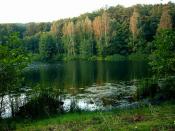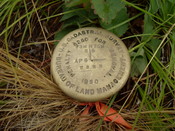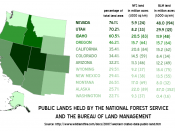About twenty-nine percent or 133 million km2 of the earth's surface is made up of land. Contributing to about 2/3 of this area are forests, grasslands, and agriculture. Other categories of land include tundra's, marshes, deserts; scrub forests, urban areas, bare rock, and ice or snow. Deserts and other unproductive lands are important factors in biogeochemical cycles and biological diversity. Because of parks, wildlife refuges, and nature preserves nearly ten percent of the world's land surface is protected.
Due to increasing human population and the expanding of forestry and agriculture, the way one uses the land has changed. Many areas are overwhelmed with moderate climates and excellent soils. Temperate forests and grasslands have been the most altered by humans. With in the past ten thousand years, billions of acres of forests have been cleared for firewood or timber or sometimes converted to croplands. Grasslands have been transformed into farm fields or cattle ranges.
Over harvesting has turned dry forests to scrub or even worse, into desert. The plowing of grasslands and the clearing of forests has had instant and destructive impacts on plants and animals. With time, however, nature has a tendency of growing back.
Forests are an important part of an ecosystem. They regulate climate, control the water that is not absorbed by soil, provide animals with food and shelter, and cleanse the air. According to the United Nations, more than half of the world's original forests have been turned into settlements, cropland, wasteland, or pasture. Most of this destruction occurred within the past two hundred years. About 4/5 of the earth's land surface is classified as closed canopy, where tree crowns cover more than twenty percent of the ground. The rest of the land open canopy, in which trees cover less than twenty percent of the ground. Amidst...


